See related article:
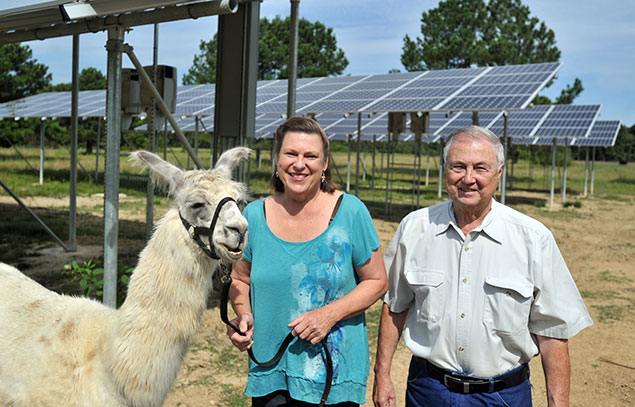
In 2013, Cozette and Tony O’Neil installed a large solar array that generates income for their farm and enough electricity to power five homes. They raise llamas and alpacas at Cozy Cove Farm, located in Gurley, Ala., just east of Huntsville.
Photo by Sarah Cole, AL.com/Landov
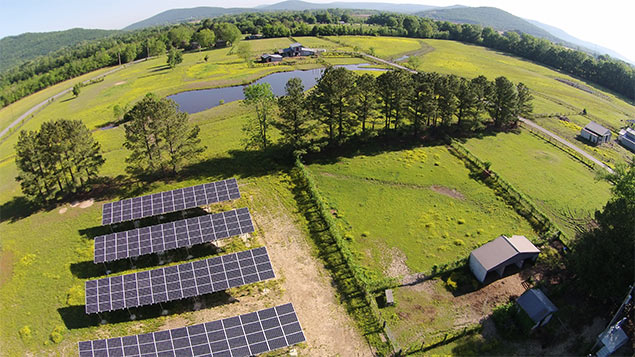
Tony gets an overhead perspective of their farm, animals and 50-kilowatt solar array with a camera mounted to a remote-controlled drone.
Photo by Tony O'Neil
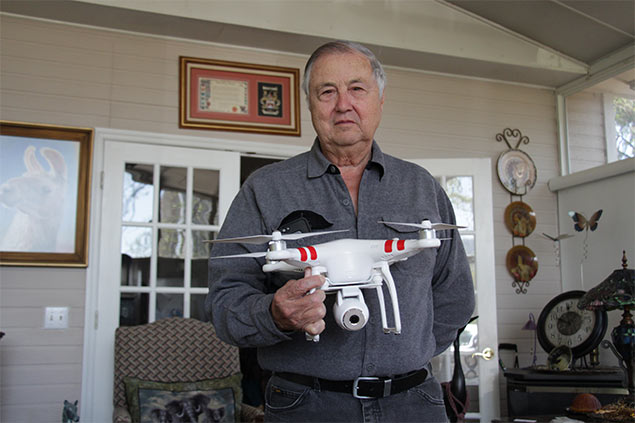
Tony and his grandsons use the camera on his DJI Phantom 2 Vision drone to get a bird’s-eye view of the farm, sharing the photos and videos on YouTube and Facebook. “The animals look so beautiful when their heads are up, but when they’re out in the pasture, they’re always eating,” he says. “When I fly that little copter, they’ll quit eating and start looking around for the sound.”
Photo by Christine Forrest
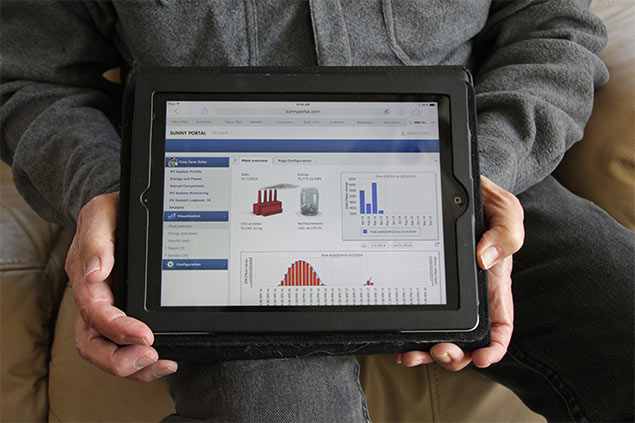
When Tony goes online to monitor the energy and income that the solar system generates, he can also see how much CO2 it avoids compared with a fossil fuel-powered plant. A retired NASA engineer and avid technology-watcher, he says he never envisioned smartphones and tablets when he started his career: “We went to the moon with slide rules. There’s more computing power in your pocket than we had on the Apollo.”
Photo by Christine Forrest
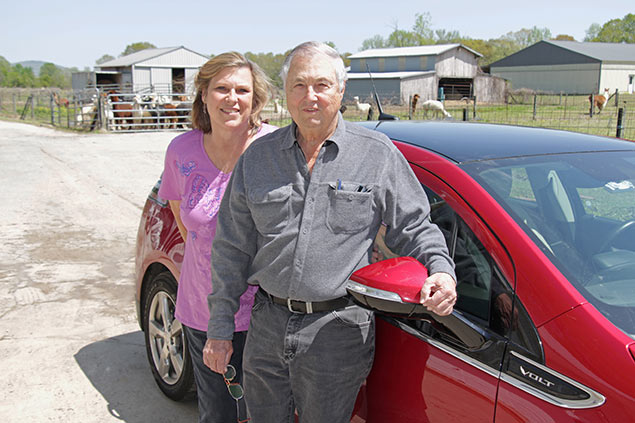
In addition to generating clean solar energy, the O’Neils have two electric vehicles — a John Deere Gator and a Chevrolet Volt — that minimize both emissions and fuel costs. “I pay about $1 to fill the car with enough electrons to drive 40 miles,” Tony says of the Volt. “Most cars, if they get 20 mpg, would use about $6.50 in gas.”
Photo by Christine Forrest

Photos of Tony’s NASA missions fill their home and screened porch, including this one signed by his colleagues. “His career was his first love,” Cozette says of her husband, who was mission manager for the ATLAS program on Space Shuttles Atlantis and Discovery.
Photo by Christine Forrest
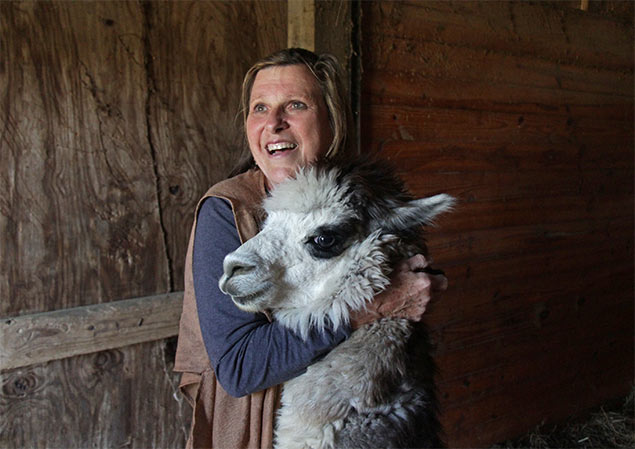
Alpacas and llamas are intelligent, cautious and trainable herd animals. Shortly before the spring shearing season, Cozette handles Kodiak, a male alpaca breed sire with beautiful rose-gray fleece.
Photo by Christine Forrest
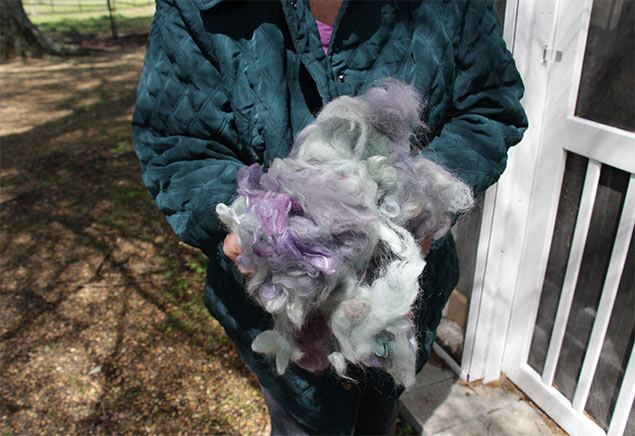
Cozette washes, picks, cards and sometimes dyes the llama and alpaca fleece, then makes the fiber into felt or yarn. “Talk about ‘baa, baa black sheep, have you any wool,’” she says. “I have 120 bags full after I shear.”
Photo by Christine Forrest
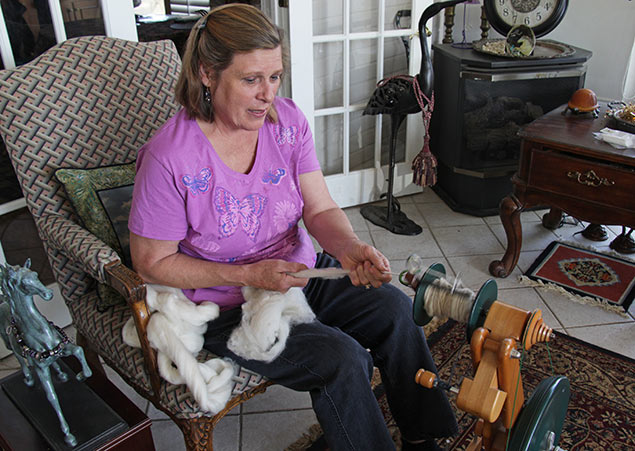
She spins undyed alpaca fiber into art yarn of varying thickness using a double-treadle spinning wheel. In general, an alpaca yields about 5 to 10 pounds of fleece each year, a llama a little less.
Photo by Christine Forrest
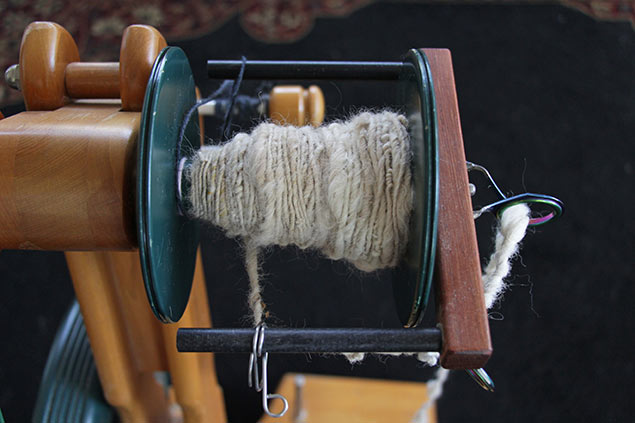
The soft alpaca and llama fiber is sometimes blended with silk, wool, bamboo or other fibers when it is spun into yarn.
Photo by Christine Forrest
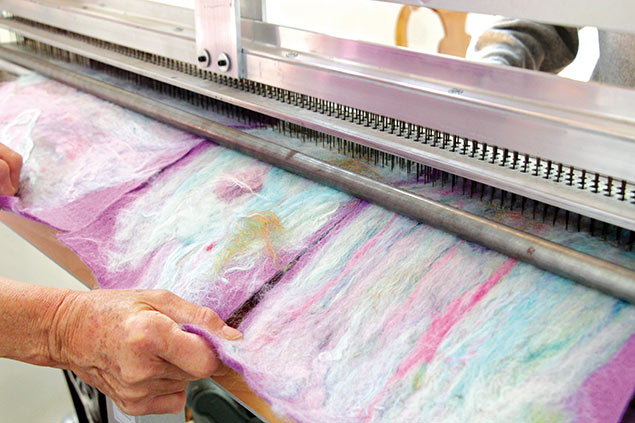
The O’Neils use an industrial needle felting machine to anchor the fiber to a fabric backing for rugs, pillows, purses and other items.
Photo by Christine Forrest
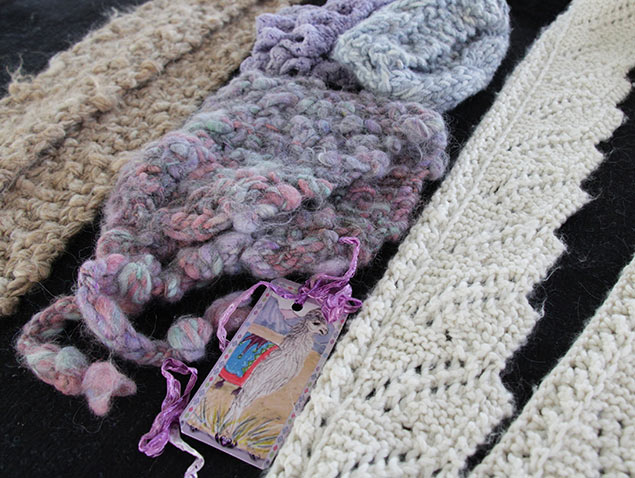
Cozette sells fiber, yarn and her hand-knit clothing to local crafters and at fiber fairs across the South. “The softest scarf I’ve ever made is alpaca,” she says. “It’s such a dense, beautiful fiber.”
Photo by Christine Forrest
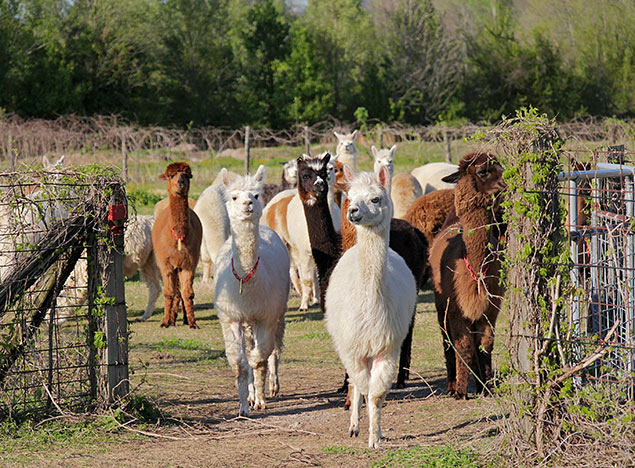
Alpacas and llamas — camel relatives native to the South American Andes — have adapted well to north Alabama. Reaching up to 200 pounds and 4½ feet in height, alpacas, above, produce very soft, warm fiber.
Photo by Christine Forrest
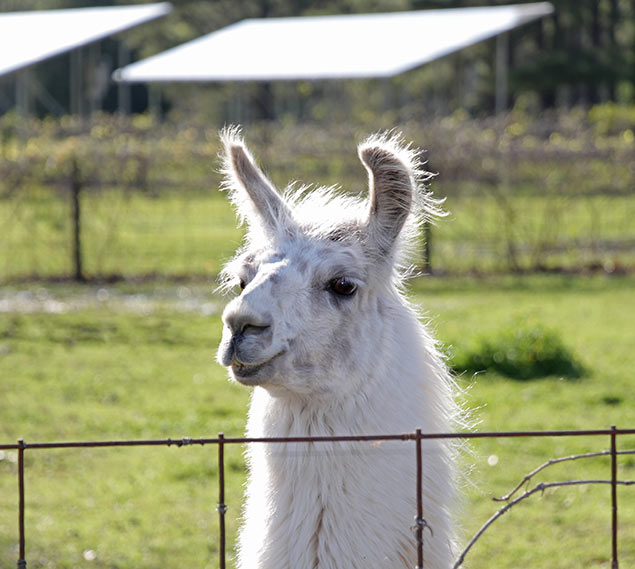
Llamas can reach more than 400 pounds and 6 feet in height, and make good guard and pack animals in addition to producing fiber. Alpacas and llamas eat grass, hay and supplemental feed, consuming less than horses, cattle and, in some cases, sheep. Their padded feet give them excellent traction while minimizing erosion and compaction in pastures and trails.
Photo by Christine Forrest